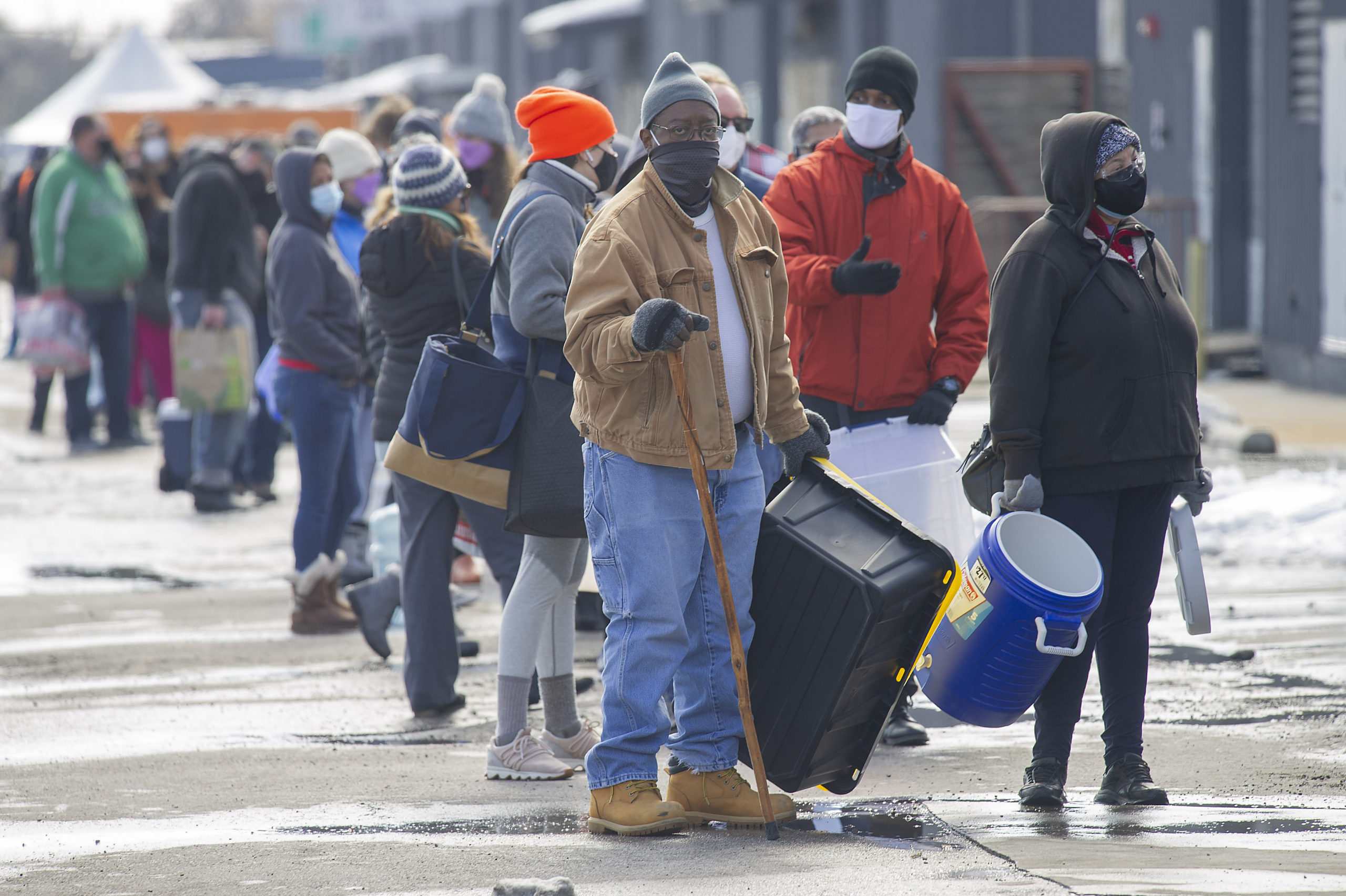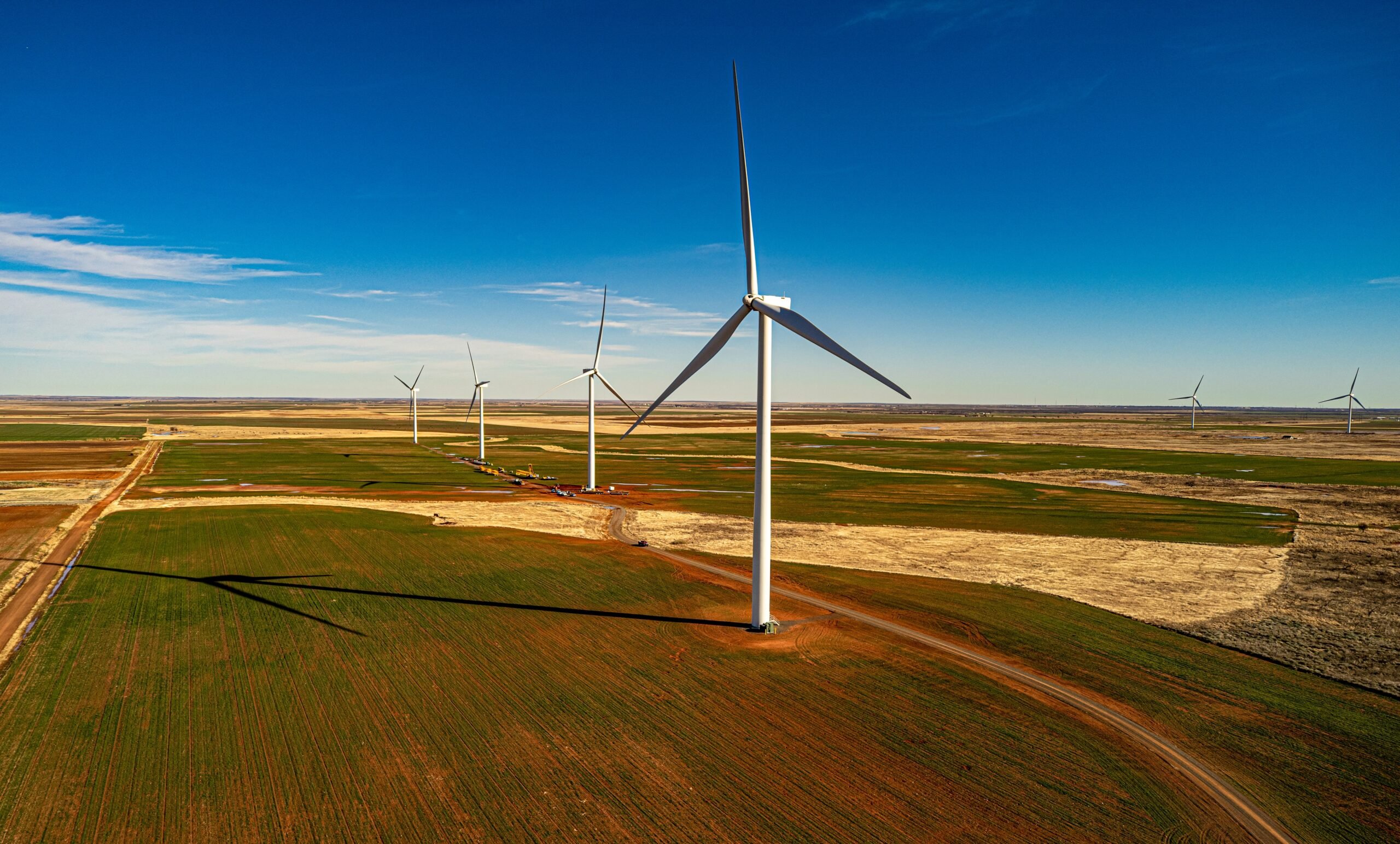
Why Texas Wasn’t Prepared for Winter Storm Uri
A disaster management expert weighs in on how poor planning and communication failures deepened the crisis that left millions without power during the deep freeze.

Above: Austin residents wait in line at St. Elmo Brewing Co. on February 19 for free potable water, after the city lost electricity and water pressure during the unprecedented winter storm in Texas.
The snow has melted and the record-breaking, freezing temperatures have warmed back up, but Texans in nearly every county will be dealing with the aftermath of Winter Storm Uri for months to come. It’s likely one of the most widespread disasters to face the state, as millions of people were stranded in cold homes for days with limited or no access to electricity and heat. About half the state’s population was without potable water late last week, and many still face water and food shortages. All eyes are on how the state’s power grid, operated by the Electric Reliability Council of Texas (ERCOT), failed so spectacularly. But in the middle of the crisis, Governor Greg Abbott told Texans to turn to Google, instead of his office, for advice on where to go and what to do in the extreme cold. What could state and local leaders have done to prepare their citizens?
The Observer spoke with Samantha Montano, a disaster management expert, about how the grid failure was exacerbated by a lack of understanding of the risks that arise with severe cold weather, as well as the absence of long-term preparedness. Montano is a professor of emergency management at Massachusetts Maritime Academy, and she’s been working in emergency management since Hurricane Katrina hit New Orleans in 2005. Some of her research has focused on flooding in Texas. Her book, Disasterology, will be published in August, and covers how and why communities—especially low income and minority communities—are unprepared for the disasters that climate change will continue to bring.

Texas Observer: We had about a week’s warning that this snow storm would hit Texas, but it seems like most government agencies were caught off guard. Why is that?
I think there’s potentially two factors going on here that are important to keep in mind. The first is just the unfamiliarity of cold weather in Texas. When you tell people in Houston that there’s a hurricane coming, people know what that means. They have experience with that, there’s a depth of understanding both among the public and among officials and various agencies.
In this situation, from what I’m seeing so far, I think there was a lack of depth of knowledge about, “What does that mean that it’s going to be cold? What do I need to do?”
I did see meteorologists who were warning about this weather and talking about the severity and preparing people for this—the idea that they weren’t going to be able to leave their house for a few days and that there was going to be the potential for really serious infrastructure and energy impacts. So there, I think, is the secondary question: For the warnings that were given and the recommendations that were given, did people act on those? Did those messages actually make it to people and influence their behavior in the couple of days before the storm?
Obviously we’re in the middle of the pandemic that makes every other kind of response more complicated. A lot of people are under economic stress right now. So even having the resources to stockpile food, if they did get that message, it’s something that some people may not have been able to do.
You mentioned hurricanes in Houston; in Dallas, where I am, I spent my childhood preparing for tornadoes. How do you compare decades worth of knowing what to do in that situation, versus just one week?
There’s a really important distinction between preparedness and response. Generally when we’re talking about preparedness, we’re talking about things that people are doing long before a disaster even happens. By the time you’re sending out weather reports and warnings about this cold weather, response has already started.
If there’s an winter storm coming and you need to go to the store and get food, yes, absolutely go and do that— but this is when we start to see issues with supply chains and we have to look at the date on the calendar to see if it’s the end of the month and people haven’t been paid yet. There are factors that become barriers for people to be able to take those actions.
Preparedness is much more than what we each do as individuals. Just keeping some extra food and water in the house isn’t going to be enough for many disasters. Local government should be the first source of government help during and after a disaster. Preparedness is much more than what we do to intentionally ready ourselves for a disaster. Local policies related to issues like housing, transportation, and infrastructure have a huge effect on our risk. If you don’t have a car and your city doesn’t have accessible public transportation that’s going to influence how prepared you are for any disaster that requires you to evacuate.
Similarly, local nonprofits are such an important part of our response that making sure they get through the disaster themselves while still being able to help the community is vital. For example, as we saw last week, it’s really important that food banks are able to keep operating through a disaster for people who do not have other access to food.
I always say if you’re standing in the middle of the disaster and you’re just pulling the plan off the shelves, then you’re already kind of screwed. The things that we’re doing that really ready our communities to be able to handle a response like this are things that are done months, years in advance. The relationships that you’re building, the lines of communications that you have, plans for coordination, the training, the exercises. All of that is done way in advance before you ever even know the disaster’s going to happen.
This storm has brought on a series of cascading disasters. What are some of the challenges in terms of getting people immediate information as these risks are changing and compounding?
When you have a situation that a particular population isn’t really familiar with, there is an even greater need for public officials to be putting out information and making sure people are getting really clear and consistent instructions about what actions they need to be taking in the moment.
This is another persistent problem within our responses to disasters. We’ve even seen that with the pandemic and the public health information that’s put out. When that isn’t consistent, when it isn’t coming from reliable sources, the public isn’t necessarily going to know how to interpret that information.
That is also further compounded among certain populations within a community: People who are undocumented and have a distrust of that information, people who are elderly and more housebound. It becomes complicated.
If you want to send a warning out, there’s different approaches that can be taken. You can send warning messages out to people’s phones, and you can have listservs with emails, put it out on radio and TV. It’s also important to think about more informal systems of communication: What are you putting out on social media, and not just from official accounts, but who else in your community is kind of a leader that can be sharing this information? How are you working with other community organizations and using their existing networks to help get information out to people who may not be tuned in or may not have the resources or access to more official channels?
This is going to look different from community to community, but making sure that, you know, you’re not just sending one tweet and saying, “Well, we tweeted it, so we’re good.” You have to have that constant flow of information.
We have a disaster declaration and now FEMA is involved. What types of aid will open up to people and where might it fall short, based on past disasters?
Texas is going to have to go through a process to determine the extent of damage in each county and determine if it reaches the threshold that FEMA looks at to take this to the White House for individual assistance funding. If individual assistance is approved, then homeowners will be able to apply through FEMA. That will help some people, but we tend to see in disasters that FEMA assistance is not enough for many to be able to reach a place of recovery.
The other major source of recovery funding here is going to be coming through insurance companies. I haven’t seen any comprehensive assessments yet of how many houses have had pipe bursts, and how that correlates to who has renter’s insurance or homeowner’s insurance. I don’t know what the gaps will look like, so that is something to keep an eye on.
The other form of recovery funding will hopefully come through nonprofits that are helping folks clear out their houses and fix damage. There are obviously a fair number of housing recovery groups in Texas, especially in Southeast Texas, given the history of flooding. But because of how geographically widespread this damage looks like it is, I think it’s going to be pretty challenging for a lot of organizations to really track down who needs help and to get volunteers. And, on top of that, you have the COVID factor. Some recovery organizations have limited their hours and volunteer numbers because of the pandemic, so there’s also an unusual circumstance there as well.
In 2011, the last time we had this level of an arctic front, people warned this was a 1-in-10 year event, and that climate change could make this worse. Given that, why do you state leaders haven’t invested in infrastructure?
This is kind of the driving question for emergency management in the context of climate change, as we go into this new world that we’re living in.
Historically, when emergency managers are doing a risk assessment, they’re looking backwards: Does your community have a flood risk, or a tornado risk? That doesn’t work with climate change. Just because a certain hazard hasn’t been a problem for a community historically, doesn’t mean that hazard is not going to be a huge problem in the next few years—or even now. A starting place is to rework those risk assessments and have broader conversations about what level of risk a community is willing to accept.
A lot of those decisions are actually going to be more local decisions as opposed to federal or even state level decisions. For some communities, something that has a 1 percent chance of happening in a given year isn’t something that they’re willing to spend the resources to mitigate. In another community, maybe that is a high enough level of risk to spend the money.
In terms of situations where we know we have a pretty significant risk and actions are not taken to mitigate, there are a lot of reasons that can happen. It is very often an issue of political will and resources to actually have it implemented. If you are in a community where you’re already in the midst of a housing crisis and your schools need to be rebuilt and there’s a drain on funds, it’s really easy to push off the hazard mitigation issues and focus on what are perceived to be more pressing issues in your community.
That being said, we have really clear research on the financial benefit of doing hazard mitigation in advance of a disaster. For every one dollar the federal government spends on mitigation, there are six dollars saved in response and recovery costs.
This interview has been edited for length and clarity.


